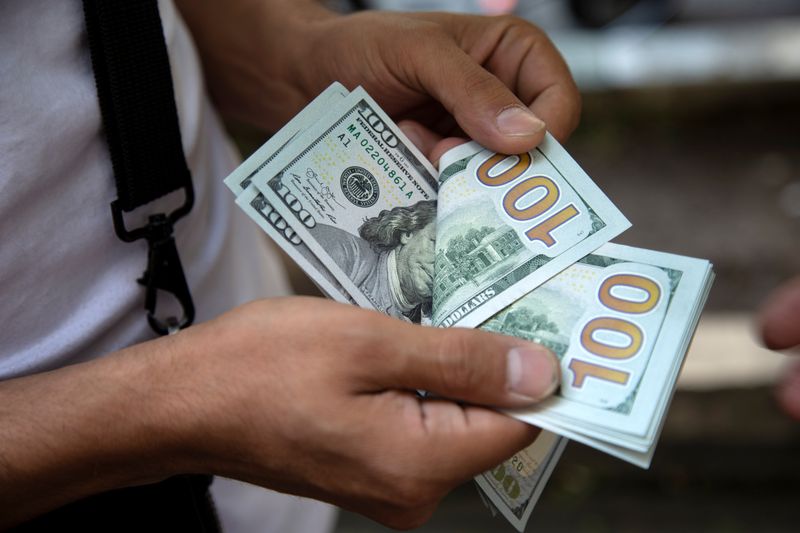
© Reuters
By Geoffrey Smith
Investing.com — The dollar was up modestly in early trade on Monday, with risk appetite still constrained by fears of both rising interest rates and war in eastern Europe.
By 3 AM ET (0800 GMT) The , which tracks the greenback against a basket of developed market economies, was up 0.1% at 95.773, still well within its recent range and struggling to post new highs.
The dollar was flat against the at $1.1321, while the was also largely unchanged at $1.3551.
Marc Chandler, managing director of Bannockburn Global Forex, noted that the dollar’s breakout earlier in the month has clearly been a false one, leaving the as the biggest gainer of the year to date among G10 currencies, with a 1.2%.
However, the usual correlations between risk assets have broken down, Chandler added. The second-best performing currency so far this year, he notes, is the risk-sensitive .
The paradox is nowhere clearer than with the Russian ruble, which tested another nine-month low against the dollar in early dealings in Europe on concerns that last week’s diplomatic breakthrough won’t be enough to stop a second Russian invasion of Ukraine in eight years.
The State Department has instructed the families of U.S. diplomats in Ukraine to leave the country, suggesting that the U.S. still attaches a high probability to the risk of conflict. The U.K. followed suit on Monday.
The fell to 77.479 to the dollar, despite ongoing strength in the price of , which typically determines its direction.
Developments in eastern Europe are, however, likely to take a back seat to those in Washington DC later in the week. The Federal Reserve’s policy-making committee starts a two-day meeting on Tuesday and is sure to give the dollar fresh direction.
For now, short-term interest rate futures suggest a possibility that the Fed will raise the Fed Funds target range by more than 25 basis points by the end of the quarter, implying a small risk of either a rate hike this week, or a 50-basis point hike in March. The overwhelming consensus, however, remains a first 25 basis point hike in March, which means that the most important developments at the Fed will be its guidance, especially with regard to when – and how fast – it will start to sell its accumulated bond portfolio back into the market.
U.S. Treasury yields rose in the first three weeks of the year, in part due to expectations of higher net supply driven by Fed sales of bonds during the year. But having peaked at over 1.80% last week, the is now back down at 1.76%.
In Europe, the main focus on Monday is likely to be on preliminary purchasing managers indices for January. Also of note will be the Deutsche Bundesbank’s , given German concerns about the 30-year high in inflation in the country and the lack of European Central Bank willingness to react by tightening monetary policy.
Fusion Media or anyone involved with Fusion Media will not accept any liability for loss or damage as a result of reliance on the information including data, quotes, charts and buy/sell signals contained within this website. Please be fully informed regarding the risks and costs associated with trading the financial markets, it is one of the riskiest investment forms possible.

